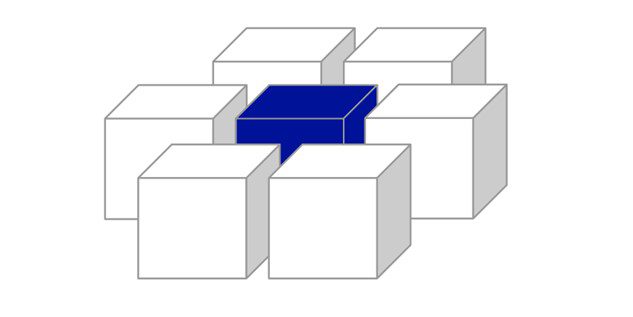Blockchain Energy: How to Reduce the Cloud Energy Demands from Blockchain
It is alarming to think but in some cases operations such as blockchain mining use as much energy as an entire city. But as the industry evolves – blockchain providers are obliged to build solutions with massively reduced carbon footprints, and as such – this shift may help providers achieve sustainability goals as well as to meet more stringent regulations that are likely to be introduced.
So by utilising emerging mechanisms for verifying blockchain transactions – such as Proof of Stake (PoS) validation protocols, businesses can greatly reduce their CPU/GPU data usage, therefore bringing down their blockchain related energy consumption, and in doing so you can add more value to a product, especially when it comes to enterprise grade consumers with bigger reputations and moral compliances to adhere to.
How verified transaction energy usage differs in the blockchain
One of the most popular uses cases for blockchain technologies are decentralised applications (Dapps). The front-end facing applications create a smart contract (transaction), which then must be verified. If the verification process is successful, it gets added to the transaction block. A transaction can only be added to the chain when a set of criteria is met. The verification process depends on the protocol sourcing a network of computers to execute the action.
Energy inefficient Proof of Work (PoW) protocol
In a network operating Proof of Work (PoW) protocol mechanisms, the transactions are validated by a mining node. The verifying nodes that operate in a PoW based network are solving a mathematical problem. They mostly use the computing power of a GPU or CPU to solve these problems. Very often, mining nodes use 100% of the available compute power. This method requires servers to be equipped with very powerful GPUs, which needs to run continually.
Energy efficient Proof of Stake (PoS) protocol
The adoption of Proof of Stake (PoS) blockchain validation protocol mechanisms are accelerating across the industry. When a blockchain is operating a PoS consensus mechanism, the transaction verification process is managed by a network of validators who run infrastructure equipped with the operational cryptocurrency of the network itself. They are driven by a common interest in maintaining network security and transparency. These “validators” operate a pool of staking nodes, which delegate a portion of their coin assets insuring the legitimacy of the transaction.
Crucially, the PoS nodes are not necessarily using a full resource capacity to compute these transactions, making it a much more sustainable blockchain ecosystem. As a result, many commentators anticipate an easing of the restrictions put in place by cloud service providers.
As a result of PoS – many commentators anticipate an easing of the restrictions put in place by cloud service providers.
The IT industry is experiencing a strong trend towards redundancy, security, transparency, and safety. If not already, blockchain-based technologies are going to be part of a fourth industrial revolution. The secure, decentralised databases that blockchain technologies offer draws criticism on sustainability grounds. This is because some types of blockchain databases utilise a large amount of power to compute and verify the data in that they are running a PoW consensus mechanism. In response to these concerns, many blockchain providers are now adjusting their data verification protocols to PoS to reduce energy consumption and meet green targets.
Further energy considerations beyond verifying transactions
Building a sustainable blockchain database is one thing, but building one that is efficient, cost-effective, and compliant is another. This requires careful planning, and an understanding of how underlying infrastructure impacts the success of your blockchain company.
| The article has been authored by Mr. Omar Abi Issa. He is an award-winning Blockchain expert, with over 7 years of enterprise B2B SME client experience. He specialises in helping tech companies with a strong focus in the Blockchain sector. Read his latest blog on how to use the cloud to solve blockchain challenges. |
Stay informed with daily updates from Blockchain Magazine on Google News. Click here to follow us and mark as favorite: [Blockchain Magazine on Google News].
Get Blockchain Insights In Inbox
Stay ahead of the curve with expert analysis and market updates.
latest from tech
Disclaimer: Any post shared by a third-party agency are sponsored and Blockchain Magazine has no views on any such posts. The views and opinions expressed in this post are those of the clients and do not necessarily reflect the official policy or position of Blockchain Magazine. The information provided in this post is for informational purposes only and should not be considered as financial, investment, or professional advice. Blockchain Magazine does not endorse or promote any specific products, services, or companies mentioned in this posts. Readers are encouraged to conduct their own research and consult with a qualified professional before making any financial decisions.

 Bitcoin
Bitcoin  Ethereum
Ethereum  Tether
Tether  Solana
Solana  Dogecoin
Dogecoin  XRP
XRP  USDC
USDC  Lido Staked Ether
Lido Staked Ether  Cardano
Cardano  TRON
TRON  Shiba Inu
Shiba Inu  Toncoin
Toncoin  Wrapped stETH
Wrapped stETH  Wrapped Bitcoin
Wrapped Bitcoin  Avalanche
Avalanche  Sui
Sui  WETH
WETH  Pepe
Pepe  Chainlink
Chainlink  Bitcoin Cash
Bitcoin Cash  Polkadot
Polkadot  LEO Token
LEO Token  NEAR Protocol
NEAR Protocol  Litecoin
Litecoin  Aptos
Aptos  Wrapped eETH
Wrapped eETH  USDS
USDS  Uniswap
Uniswap  Cronos
Cronos  Stellar
Stellar  Internet Computer
Internet Computer  Bittensor
Bittensor  dogwifhat
dogwifhat  Ethereum Classic
Ethereum Classic  Dai
Dai  WhiteBIT Coin
WhiteBIT Coin  Artificial Superintelligence Alliance
Artificial Superintelligence Alliance  Ethena USDe
Ethena USDe  POL (ex-MATIC)
POL (ex-MATIC)  Stacks
Stacks  Monero
Monero  OKB
OKB  Hedera
Hedera  Render
Render  Bonk
Bonk  Filecoin
Filecoin  Aave
Aave 



